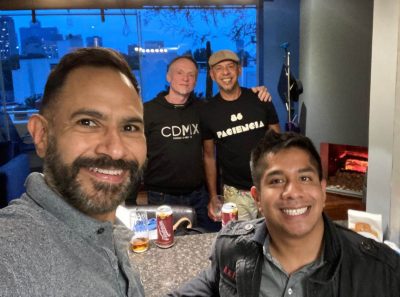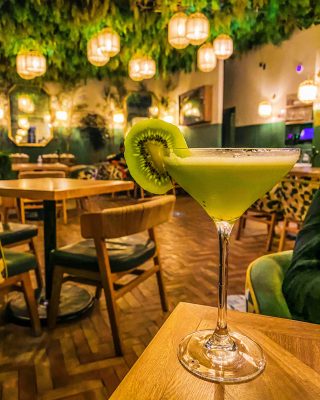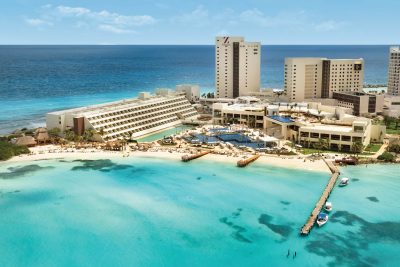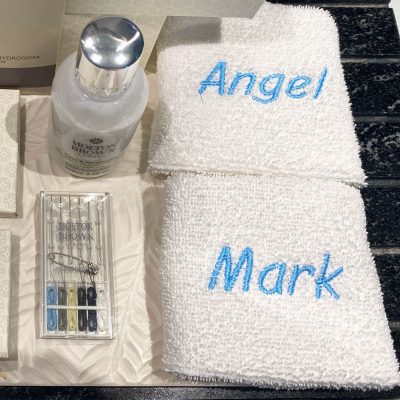As the pandemic continues to limit our travel opportunities around the world, Mexico remains one of the few major nations that currently welcomes travelers from the United States with no testing required. Is it worth planning a Mexico vacation at a time when some businesses and attractions remain closed, and when health concerns are an issue? Over the past month, I took two trips to Mexico, visiting Cancun twice and Mexico City once. I took a total of six flights and stayed in four hotels and one Airbnb apartment. I visited restaurants, museums, stores and bars in both destinations. And I’ve gotten a pretty good idea about today’s realities.

Photo by Luna Vandoorne
Pandemic Facts
First, the facts. According to the latest figures from the World Health Organization, Mexico has had at nearly 630,000 cases of COVID-19, and more than 67,000 people have died. In terms of cases per 100,000, the highest percentages are in Tabasco, Mexico City, and Baja California Sur. Mexico City has by far the largest number of total cases, followed distantly by the states of Guanajuato, Nuevo León, and Tabasco. The total number of coronavirus cases and deaths reported in Mexico is still far below that of the United States, according to a recent report in The Guardian, however, critics say the numbers in Mexico may be underreported. There is some potentially good news. According to Mexico News Daily, the number of coronavirus cases in August was 23,000 lower than the previous month, marking the first monthly decline in cases since the start of the pandemic. Regardless of the latest statistics, there’s a lot to consider. There is inherent risk in travel today. As for Mexico, the U.S. State Department has placed Mexico at Level 3 (Reconsider Travel) and recommends reading its COVID-19 Traveler Information page for additional information about travel during the pandemic. That doesn’t mean that people aren’t visiting, of course. Flights to major Mexican destinations have increased, and people are flying in, even as the Mexico/U.S. border has been largely closed to land entry. To rank the current status around the nation, the Mexican government uses a pandemic monitoring system with four colors that they call traffic lights: red, orange, yellow, and green, and each state is ranked independently. Cancun, in the state of Quintana Roo, was as of press time moving from orange to yellow, allowing for the re-opening of more public spaces.

Mark Chesnut and His Husband Angel Pabon at Live Aqua Cancun
I must say that personally, I felt safe during nearly every part of my trips. But I took precautions: I wear a face mask at all times (plus a face shield in the airports and on the plane). I keep my distance from people, use hand sanitizer and wash my hands frequently. I found that locals in Cancun and Mexico City tended to be very compliant with prevention protocols, with face masks and social distancing the norm. The only time I felt at risk was at one hotel bar in Cancun: all the hotel staff were wearing masks but not a single guest was, and there was no social distancing at all (nearly all of the guests were from the United States and Canada). I learned quickly to avoid settings with drunk tourists and felt much safer as a result.
While I was worried by the behavior of some fellow travelers, I was impressed with the measures taken by local authorities and businesses, including during the arrival and departure process. In general, I found that Mexico’s airports take even more hygiene-related precautionary steps than their counterparts in the United States. As in U.S. airports, masks are required of all staff and travelers, both in the airports and on all flights. But Mexico’s airports take things a bit further, with temperature checks upon arrival and departure and health questionnaires (accessible via QR code) for anyone departing from any Mexican airport.
Personally, I enjoyed my research trips to both Cancun and Mexico City. My husband accompanied me on one trip, and we both found that while no destination is the same as it was just a few months ago, it is possible to have a safe and pleasant experience, when you know what to expect.
Mexico City Today
“I’m everything now: the manager, the waitress and the health monitor,” joked the woman who took our temperatures before serving us mezcal at La Botica (La Botica, Calle Amberes 1, Juarez. Tel: +52-55-5511-1384). one of the few LGBTQ bars now open on Calle Amberes, the nightlife hub for Mexico City’s Zona Rosa. The bar is open daily from 1 P.M. to 10 P.M, and to get in, our group of four had to step on a shoe sanitizing mat, have our temperatures checked, and sit at two socially distanced tables. Mexico City’s normally vibrant LGBTQ nightlife is a shadow of its usual self, thanks to quarantine regulations that have shuttered nearly all the popular nightspots, including most in the legendary Zona Rosa district, the city’s “pink zone.”

Marrakech (photo by Mark Chesnut)
In recent weeks, a few bars have reopened, but with strict regulations. They close early, must serve food, require masks, social distancing, and temperature taking. There’s no dancing and no karaoke, but you can enjoy drinks at a handful of places including La Botica, Almacen (Florencia 37-A, Juarez. Tel: +52-55-5207-9424), La Gayta PussyBar (Amberes 18, Juarez. Tel: +52-55-5207-7626), and Marrakech 2.0 (Calle de Filomeno Mata 18, Centro. Tel: +52-55-2522-5315), a café bar affiliated with a popular (but currently closed) nightclub called Marrakech.
Overall, Mexico City is less crowded and chaotic. Everyone wears masks. The Metro is quieter. Restaurants have indoor and outdoor seating, but with limited capacity. Most museums and some attractions are open, but they’re operating at reduced capacity. We visited at least five museums during our stay and, while some recommend advance reservations, we were able to enter without waiting. The Zocalo, the city’s largest square, was blocked off and a guard took our temperatures before we were allowed into the historic cathedral.

Mexico City natives Alejandro and Marcos Ivan hosted their friends Mark and Angel for a socially distanced dinner in Mexico City
Accommodations in Mexico City have changed with the times, too. We checked into the Fiesta Americana Viaducto (Av. Viaducto Rio de la Piedad 515 Col. Granjas. Tel: +52-55-8660-9400), the newest and most technologically advanced hotel in the upscale Fiesta Americana chain. In addition to fun features like Bluetooth-enabled rooftop dining cabanas, the property also has an automated temperature kiosk, rather than the common temperature “guns.” Fiesta Americana is part of Grupo Posadas, one of Mexico’s largest hoteliers, which has introduced Travel with Confidence Protection, a program that provides guests with travel and medical expense coverage for just $4 per day, covering accidents and non-pre-existing diseases including COVID-19.

Castizo Restaurant in Mexico City (photo by Mark Chesnut)
Other hotels staying on top of the latest protocols include the Hilton Mexico City Reforma (Av. Juarez 70, Centro. Tel: +52-55-5130-5300), which follows the guidelines of the Hilton CleanStay program, and the St. Regis Mexico City (Av. Paseo de la Reforma 439, Cuauhtémoc. Tel: +52-55-5228-1818), one of the city’s top luxury hotels, which adheres to parent company Marriott International’s Commitment to Clean initiative. If you’ve assumed destination weddings aren’t an option during the pandemic, think again. The St. Regis is participating in New Beginnings Await, Marriott’s new LGBTQ destination wedding programs that’s also available at the W Mexico City (Campos Eliseos 252, Polanco. Tel: +52-55-9138-1800). Airbnb has also taken steps to assure traveler safety. My husband and I stayed at a beautiful apartment in the trendy Condesa district that follows the company’s Enhanced Clean guidelines, and the host left us a bottle of hand sanitizer and a package of sanitary wipes, too.
Gerardo Tanaka, a Mexico City-based public relations executive who’s worked with several tourism organizations, is optimistic about the city’s return as a magnet for LGBTQ tourism. “The city will definitely regain its allure” with LGBTQ travelers, he said. “Mexico City is a haven for LGBTQ people. It offers a number of hotels, bars, attractions, and services geared specifically toward the LGBTQ community.” The Mexico City Ministry of Tourism (Tel: +52-55-5658-1111), is a good resource for staying up to date; it also offers a detailed downloadable LGBTQ guide to the city.
Cancun and What to Expect Once You Get There
As Cancun and the state of Quintana Roo move from orange to the yellow alert level, Mexico’s biggest tourism destination is preparing to welcome more travelers. During my two visits, hotels were capped at 30 percent occupancy, but as of press time were jumping to 60 percent.

Grand Fiesta Americana Coral Beach Cancun (photo by Grupo Posadas)
From the time you land in Cancun, you’ll notice some changes. I’d never passed so quickly through customs and immigration. All the destinations in this region, an area collectively called the Mexican Caribbean, have received the Global Safe Travels stamp from the World Travel and Tourism Council, in recognition of their health and prevention efforts. Several practices have become standard at every Cancun hotel I’ve visited during the pandemic: all staff members wear masks and they take your temperature and offer hand sanitizer upon arrival, while directing you toward a sanitizing door mat before entering the hotel. In addition, they may spray sanitizer on your luggage prior to check-in. You can also expect to see floor markers to encourage social distancing, and elevators are limited to four passengers at a time.
Hotel properties have incorporated new hygiene standards in various ways, from plastic-wrapped TV remote controls to in-room hygiene kits that include hand sanitizer, antibacterial wipes and face masks. A-la-carte hotel restaurants continue to operate as usual, although with sparser seating, and some now have menus accessible via QR code.

Hyatt Ziva Cancun (photo by Playa Hotels and Resorts)
I was impressed by unique, safety-minded touches at each property I visited. The Hyatt Ziva Cancun (Blvd. Kukulcan Mz 51, Punta Cancun, Zona Hotelera. Tel: +52-998-848-7000), for example, follows Hyatt’s Global Care & Cleanliness Commitment and requires that guests wear masks when visiting indoor public areas and moving around the property.
The Grand Fiesta Americana Coral Beach Cancun All-Inclusive Spa Resort (Blvd. Kukulcan km. 9.5, Punta Cancun, Zona Hotelera. Tel: +52-998-881-3200), a luxury hotel that this year converted from the European plan to an all-inclusive format, even has an attendant at the lobby’s elevator bank, ready to offer hand sanitizer and push the elevator buttons to help minimize guest contact with high-touch surfaces.

Live Entertainment at Hyatt Ziva Cancun (photo by Mark Chesnut)
Similarly dedicated are the brand-new Canopy by Hilton Cancun La Isla (Blvd. Kukulcan S/N, Zona Hotelera. Tel: +52-998-689-1193), which follows the Hilton CleanStay protocol, and Live Aqua Beach Resort Cancun, (Blvd. Kukulcan Km 12.5, Zona Hotelera. Tel: +52-998-881-7600), which, like the Grand Fiesta Americana, offers the Grupo Posadas Travel with Confidence Protection option. The Live Aqua, an adults-only, all-inclusive property, also organizes LGBTQ destination weddings that incorporate all the latest hygiene and safety protocols.
LGBTQ destination wedding packages are also available at the JW Marriott Cancun Resort & Spa (Blvd. Kukulcan km 14.5, Zona Hotelera. Tel: +52-998-848-9600), Renaissance Cancun Resort & Spa (Blvd. Kukulcan km 1.5, Zona Hotelera. Tel: +1-52-998-868-5100), and Haven Riviera Cancun (Carretera Federal 307, Puerto Morelos. Tel: +52-998-889-9600), which is scheduled to reopen on October 1. “Same-sex marriage has been legal in Mexico since 2015 and the city relies so heavily on tourism that tourists from all over are warmly welcomed,” said Jan LaPointe, Haven’s director of sales and marketing for North America.
For hotel guests in Cancun, the outdoor experience isn’t much different from before the pandemic — except that there are fewer people and, depending on the hotel, you may be requested to wear a mask when walking around. All the swimming pools were open at all the hotels that I visited, and so were the beaches (although some public beaches may not be open to the general public). The same goes for waterspouts; most hotels seem to have their full range of watersports still available.

Live Aqua Personalized Towels (photo by Mark Chesnut)
My husband and I found a much quieter Cancun than usual; some restaurants and attractions were closed and there were far fewer visitors. But there was enough to keep us occupied for a few days. Among the attractions that have opened are the ecological parks Xcaret (Tel: 855-326-0682) and Rio Secreto (Tel: 888-257-6087), as well as Garrafón Park (Tel: 866-393-5158) on nearby Isla Mujeres. Nearly all the stores at La Isla (Blvd. Kukulcan km 12.5. Tel: +52-998-883-5025), the upscale shopping center, were open, too.
But for nightlife, well, you’ll have to make do with a few “mainstream” bars with open-air seating in the main hotel zone. All the LGBTQ nightlife, which is located downtown, is closed until the final “green light” phase. Once that happens, there will certainly be lots of people heading to Laser Hot Bar (Plaza Galerias, Avenida Tulum S/N, Bancos. Tel: +52-998-366-1560) and 11:11 Club (Avenida Tulum Smz 22 Mz 5 Lote 33, Centro. Tel: +52-998-135-2243) for dancing, drinking and drag shows.
For tourism updates about Cancun check with the Quintana Roo Tourism Board (Tel: +52 984 206 3150.
_________________________
You May Also Like:

